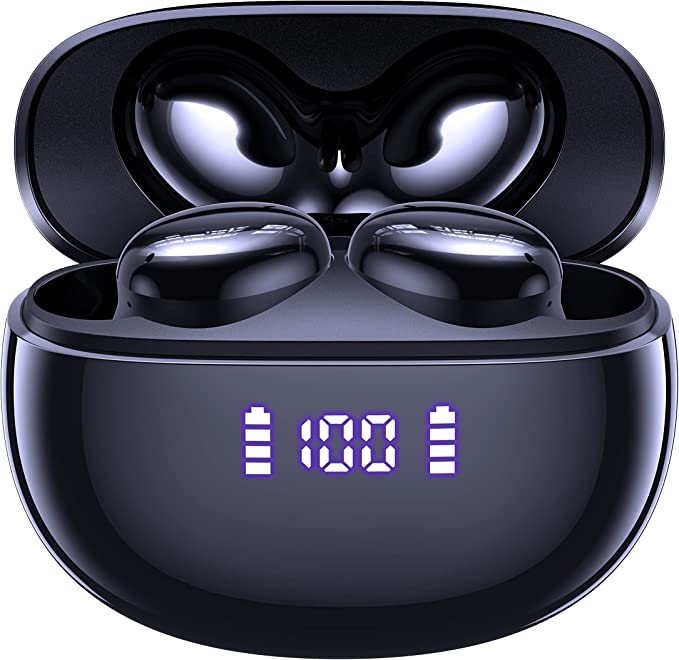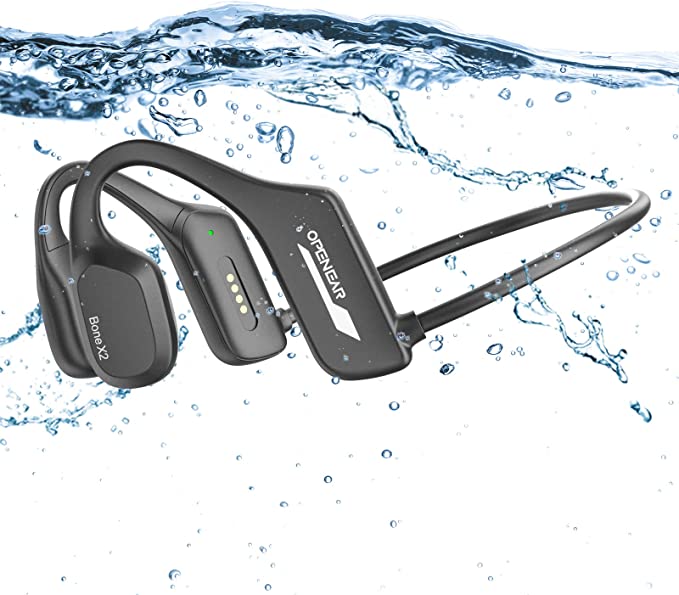Imagine the rhythmic pull of your arms through cool water, the steady kick propelling you forward, the muffled silence of being submerged – a world both serene and strangely isolated. For many swimmers, runners, and cyclists, music is the perfect companion, a driving beat that transforms exertion into exhilaration. Yet, merging our personal soundscapes with the demands of intense activity, especially in water, has long been a frustrating technical hurdle. Earbuds slip, water ingress silences devices, and the very physics of water seems determined to block our wireless connections. How can we reliably, comfortably, and safely bring our soundtracks into these challenging environments? The answer lies not in forcing old methods but in embracing technologies specifically engineered to navigate these barriers, like those found within the HIFI WALKER T10 Air. This isn’t just about another pair of headphones; it’s about understanding the science that allows sound to travel where it usually struggles.

Hearing Through Touch: The Intriguing Science of Bone Conduction
We typically experience sound as vibrations traveling through the air, channeled by our outer ear to vibrate the eardrum, which then sets tiny bones in the middle ear in motion, ultimately stimulating the auditory nerve within the cochlea (inner ear). This is air conduction. Bone conduction, however, offers a fascinating alternative pathway. Think of how you can feel the deep vibrations of a cello through the floor, or how placing a vibrating tuning fork against the bone behind your ear allows you to ‘hear’ its tone directly.
The HIFI WALKER T10 Air utilizes this very principle. Instead of speakers directing sound waves into your ear canal, it employs transducers that rest gently on your cheekbones, just in front of your ears. These transducers generate subtle vibrations that travel directly through the bones of your skull to the cochlea, effectively bypassing the outer and middle ear structures entirely.
This ingenious approach yields immediate, tangible benefits. The most obvious is the open-ear design. Because nothing blocks or seals your ear canal, you remain fully aware of your surroundings. For runners and cyclists sharing roads, this means hearing traffic, pedestrians, or warning signals – a crucial safety advantage. For swimmers, it might mean hearing a coach’s instruction or simply being more connected to the pool environment. Beyond safety, this openness translates to comfort. There’s no pressure inside the ear canal, no irritation from ill-fitting buds, making them suitable for extended wear during long training sessions.
It’s important to understand that listening via bone conduction offers a different auditory profile compared to traditional earbuds. By bypassing the resonant chambers of the ear canal and the mechanics of the eardrum, the perceived sound quality can differ, sometimes emphasizing mid-range frequencies differently or lacking the deep, booming bass some listeners are accustomed to from sealed in-ear designs. It’s not necessarily better or worse, but a distinct experience often prized for its clarity, non-invasive comfort, and, paramountly, its ability to keep you connected to the world around you while still enjoying your audio.

Diving Deeper: IPX8 Waterproofing and Why Bluetooth Fears Water
For anyone serious about swimming with music, the term “waterproof” is critical, and the IP rating system provides a standardized measure. The T10 Air carries an IPX8 rating. The ‘IP’ stands for Ingress Protection, ‘X’ means it hasn’t been rated for dust ingress (common for headphones primarily focused on water), and the ‘8’ signifies the highest level of protection against continuous water immersion. Specifically, IPX8 means the device is tested to withstand submersion in water deeper than 1 meter for an extended period (the exact depth and duration are set by the manufacturer but must exceed the IPX7 standard of 1m for 30 mins). This robust sealing is fundamental for any device intended for serious swimming.
However, here’s a crucial distinction often misunderstood: being physically waterproof doesn’t guarantee wireless functionality underwater. The culprit is physics. Bluetooth operates using radio waves, typically in the 2.4 GHz frequency range. While these waves travel effortlessly through air, water is a significantly denser medium that heavily absorbs and scatters them. Think of trying to shine a flashlight through thick fog – the light quickly diffuses and weakens. Similarly, Bluetooth signals struggle to penetrate even a few inches of water reliably. This is why most Bluetooth headphones, regardless of their waterproof rating, cut out almost instantly upon submersion.
Recognizing this unavoidable physical limitation, the T10 Air incorporates an elegant and necessary solution: an integrated MP3 player. By storing music files directly on the device, it eliminates the need for a wireless signal underwater. A simple double-click of the power button switches the headphones from Bluetooth mode (for use on land) to MP3 mode. Now, the audio source is internal, completely unaffected by water’s signal-blocking properties, delivering a consistent and uninterrupted soundtrack for your laps.

Setting Your Soundtrack Free: The Power of the Onboard 32GB MP3 Vault
The inclusion of a built-in MP3 player is more than just an underwater necessity; it represents a fundamental shift towards device independence during activity. The T10 Air boasts 32GB of internal storage, a capacity generous enough to hold thousands of songs (the product page estimates up to 4000, though this varies greatly with file format and bitrate). This liberates you from the need to carry a potentially bulky, fragile, and distracting smartphone on your run, ride, or, most crucially, to the poolside.
The device demonstrates considerable versatility in file compatibility, supporting a wide range of popular audio formats, including MP3, FLAC, WMA, AAC, WAV, APE, and M4A. This ensures users can likely load their existing music library without extensive reformatting, whether they prefer the space-saving convenience of compressed formats or the higher fidelity of lossless audio like FLAC.
Loading music is designed for simplicity. Using the included magnetic charging cable, which doubles as a data transfer tool, you connect the T10 Air to a computer. It typically appears as a standard external drive, allowing you to simply drag and drop your audio files directly onto the device. This straightforward process makes curating your workout playlists quick and intuitive, putting your personal soundtrack just a few clicks away, ready for action without reliance on any other gadget.

Seamless Connections on Terra Firma: The Role of Bluetooth 5.3
While the MP3 player is the star for aquatic activities, the T10 Air doesn’t neglect connectivity on dry land. It incorporates Bluetooth 5.3, the latest iteration (as of its release) of the ubiquitous wireless standard. Compared to older Bluetooth versions, 5.3 generally offers incremental improvements focused on faster pairing, enhanced connection stability (reducing dropouts), lower latency, and better power efficiency.
These technical enhancements translate into tangible user benefits. You can expect a more reliable connection to your smartphone or smartwatch for streaming music or podcasts during runs, gym sessions, or cycling. The improved power efficiency likely contributes to the T10 Air achieving its specified 8 hours of continuous playtime on a single charge. Furthermore, the inclusion of a built-in microphone (as confirmed in the product FAQ) allows the headphones to function as a headset for taking calls, adding another layer of convenience. It maintains broad compatibility with standard iOS and Android devices.
It’s worth reiterating the clear operational boundary established by the design: Bluetooth 5.3 provides the wireless convenience expected for modern headphones during land-based activities, while the onboard MP3 player reliably takes over when you hit the water, bypassing the physical limitations of wireless transmission in that environment.

Forged for Action: The Lightweight Strength of Titanium
Active gear needs to be resilient. It faces sweat, impacts, and constant movement. The HIFI WALKER T10 Air addresses this through its material choice, featuring a frame constructed primarily from titanium. This metal is well-regarded in engineering circles for its exceptional strength-to-weight ratio. It’s incredibly strong and durable, comparable to steel, yet significantly lighter.

This translates directly to the user experience. The headphones weigh a mere 20 grams (0.705 ounces), according to specifications, making them exceptionally lightweight and comfortable to wear, even for extended periods. You barely notice they’re there. Simultaneously, the titanium frame provides inherent durability and flexibility. It can withstand the inevitable knocks and bumps of an active lifestyle and allows the frame to flex and conform to the user’s head without easily deforming, ensuring a secure fit. This flexibility works in concert with the included adjustable strap, which further enhances stability, keeping the headphones firmly in place during vigorous activities like running or swimming turns. The material’s natural resistance to corrosion is also a bonus, particularly given exposure to sweat and pool chemicals.

Conclusion: Bridging Worlds with Thoughtful Sound Engineering
The HIFI WALKER T10 Air stands as a compelling example of how targeted engineering can overcome significant environmental challenges to enhance our active lives. It’s not about one single breakthrough technology, but rather the intelligent synthesis of several key elements. Bone conduction tackles the need for situational awareness and open-ear comfort. The robust IPX8 waterproof rating provides the necessary physical protection against water ingress. Critically, the integrated 32GB MP3 player directly addresses the physical barrier water poses to Bluetooth signals, ensuring reliable underwater audio playback. This is complemented by modern Bluetooth 5.3 for seamless wireless connectivity on land. And underpinning it all is a lightweight yet durable titanium frame, built for the rigors of movement.
By understanding the limitations – the physics of sound transmission in different mediums, the constraints of wireless signals, the ergonomic needs of athletes – and applying specific scientific principles and material choices, devices like the T10 Air effectively bridge the gap between our desire for immersive audio and the demanding environments where we pursue our passions. It’s a reminder that thoughtful design can dissolve barriers, allowing technology to seamlessly integrate into and elevate the human experience, even beneath the water’s surface.




